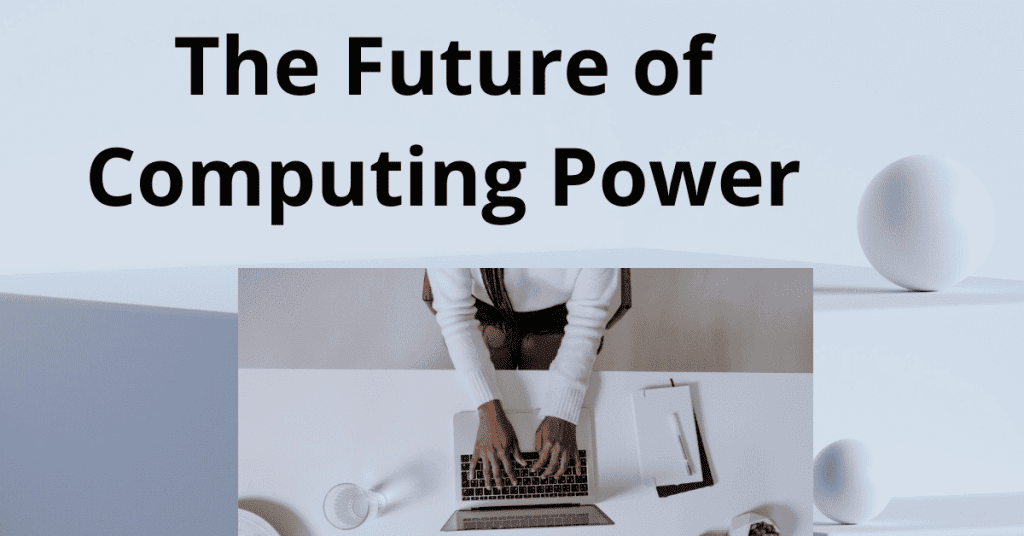Last Updated on January 23, 2024 by Gavi

Computing power is the driving force behind modern technological advancements and has transformed the way we live, work, and communicate.
From the early days of mainframe computers to the emergence of personal computing devices and supercomputers, the constant quest for greater computing power has fueled innovation in various fields.
In this article, we will explore the concept of computing power, its historical evolution, measurement techniques, technological advancements, applications, challenges, and the future of computing power.
Introduction to Computing Power
Computing power refers to the ability of a computer system to perform complex calculations, process vast amounts of data, and execute tasks at high speeds.
It is determined by several factors, including the speed and efficiency of the central processing unit (CPU), the architecture of the system, and the software algorithms employed.
Understanding Computing Power
To understand computing power, it is essential to grasp the basic components of a computer system and their roles.
The CPU acts as the brain of the computer, performing calculations and executing instructions. Other components, such as memory, storage, and input/output devices, support the CPU’s operations.
Historical Evolution of Computing Power
The Early Days of Computing
The concept of computing power traces back to the early mechanical and electromechanical devices, such as the abacus and Charles Babbage’s analytical engine. These devices provided the foundation for the development of modern computers.
The Emergence of Personal Computers
With the introduction of personal computers in the 1970s and 1980s, computing power became accessible to individuals.
These early computers were characterized by limited processing capabilities and memory capacities compared to today’s standards. However, they laid the groundwork for the exponential growth of computing power.
The Rise of Supercomputers
Supercomputers, introduced in the 1960s, pushed the boundaries of computing power even further. These machines were designed to solve complex scientific and engineering problems and were initially available only to government agencies and large organizations.
Over time, supercomputing technology became more accessible, leading to advancements in various fields.
Measuring Computing Power

Measuring computing power involves evaluating several key factors that contribute to the overall performance of a computer system.
Clock Speed and Processor Performance
Clock speed refers to the number of cycles a CPU can execute per second, measured in gigahertz (GHz).
Higher clock speeds generally indicate faster processing capabilities. However, it is important to note that clock speed alone does not provide a complete picture of computing power.
Moore’s Law and Its Impact
Moore’s Law, formulated by Intel co-founder Gordon Moore, states that the number of transistors on a microchip doubles approximately every two years. This observation has led to a consistent increase in computing power and has driven innovation in the technology industry.
Benchmarking and Performance Metrics
Benchmarking involves running standardized tests on computer systems to assess their performance.
Various benchmarking tools and performance metrics, such as the SPECint and SPECfp benchmarks, provide a standardized way of comparing computing power across different systems.
Technological Advancements in Computing Power
Technological advancements have played a crucial role in enhancing computing power and enabling new possibilities.
Parallel Processing and Multi-Core CPUs
Parallel processing involves breaking down tasks into smaller subtasks that can be executed simultaneously by multiple processors or cores.
This approach significantly improves computing power by dividing the workload among multiple units.
Graphics Processing Units (GPUs)
Initially designed for rendering graphics in video games, GPUs have evolved into powerful computational devices.
Their parallel architecture makes them well-suited for tasks such as artificial intelligence, data analysis, and scientific simulations.
Quantum Computing
Quantum computing leverages the principles of quantum mechanics to perform calculations using quantum bits or qubits.
Quantum computers have the potential to solve problems that are currently intractable for classical computers, promising a significant leap in computing power for specific applications.
Applications of High Computing Power
High computing power opens up numerous possibilities across various domains.
Artificial Intelligence and Machine Learning
Artificial intelligence and machine learning algorithms heavily rely on computing power to process vast amounts of data and perform complex calculations.
From voice assistants to autonomous vehicles, AI applications are transforming industries and enhancing human capabilities.
Data Analysis and Big Data Processing
With the exponential growth of data, computing power is critical for analyzing and extracting insights from large datasets.
High-performance computing systems enable businesses to derive valuable information, make data-driven decisions, and uncover hidden patterns.
Scientific Research and Simulation
Computing power plays a vital role in scientific research, enabling complex simulations, modeling, and data-intensive calculations.
From weather prediction to drug discovery, high-performance computing accelerates scientific breakthroughs and advancements.
Cryptocurrency Mining
Cryptocurrency mining relies on computing power to solve complex cryptographic puzzles and validate transactions on blockchain networks.
Miners utilize powerful hardware to compete for rewards, driving the need for higher computational capabilities.
Challenges and Limitations of Computing Power
Despite the remarkable progress in computing power, several challenges and limitations persist.
Heat Dissipation and Energy Efficiency
High-performance computing systems generate significant heat, requiring efficient cooling mechanisms to prevent overheating.
Improving energy efficiency is crucial to mitigate the environmental impact of computing power and reduce operational costs.
Physical Constraints and Quantum Effects
As transistor sizes shrink, physical constraints and quantum effects start to impose limitations on traditional computing methods.
The development of alternative technologies, such as quantum computing and neuromorphic systems, aims to overcome these challenges.
Ethical Considerations and AI Development
The rapid advancement of computing power, especially in the realm of artificial intelligence, raises ethical considerations.
Issues such as privacy, algorithmic bias, and the impact of AI on the job market require careful attention to ensure responsible and inclusive development.
The Future of Computing Power

The future of computing power holds exciting possibilities and potential advancements.
Neuromorphic Computing and Brain-Inspired Systems
Neuromorphic computing aims to mimic the structure and functionality of the human brain, offering significant improvements in efficiency and cognitive capabilities.
These brain-inspired systems have the potential to revolutionize computing power and enable new computing paradigms.
Advancements in Quantum Computing
Quantum computing continues to evolve, with ongoing research and development efforts. As quantum computers become more practical and scalable, they have the potential to solve complex problems exponentially faster than classical computers.
Edge Computing and Distributed Systems
Edge computing focuses on processing data closer to the source, reducing latency and enabling real-time processing.
Combined with the power of distributed systems, edge computing holds promise for applications such as autonomous vehicles, smart cities, and the Internet of Things (IoT).
Conclusion
Computing power has been the driving force behind technological progress, enabling innovations across various fields.
From the early days of computing to the rise of supercomputers and the advent of quantum computing, advancements in computing power have transformed our world.
FAQs
How is computing power measured?
Computing power is measured through factors such as clock speed, benchmarking tests, and performance metrics that evaluate a system’s processing capabilities.
What is Moore’s Law?
Moore’s Law states that the number of transistors on a microchip doubles approximately every two years, leading to consistent advancements in computing power.
What are some applications of high computing power?
High computing power finds applications in artificial intelligence, data analysis, scientific research, and cryptocurrency mining, among others.
What challenges does computing power face?
Challenges include heat dissipation, energy efficiency, physical constraints, quantum effects, and ethical considerations surrounding AI development.
What does the future hold for computing power?
The future of computing power includes advancements in neuromorphic computing, quantum computing, and the rise of edge computing and distributed systems, unlocking new possibilities for technology.
However, challenges such as energy efficiency and ethical considerations must be addressed. The future holds exciting possibilities with neuromorphic computing, quantum advancements, and edge computing shaping the next generation of computing power.